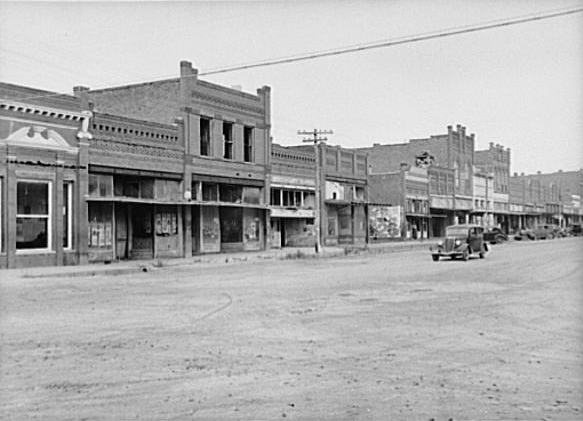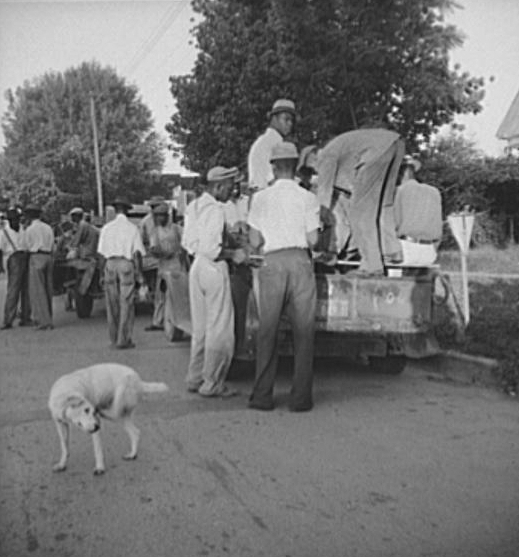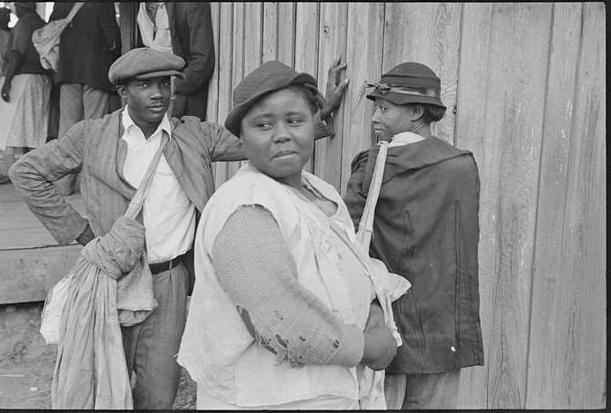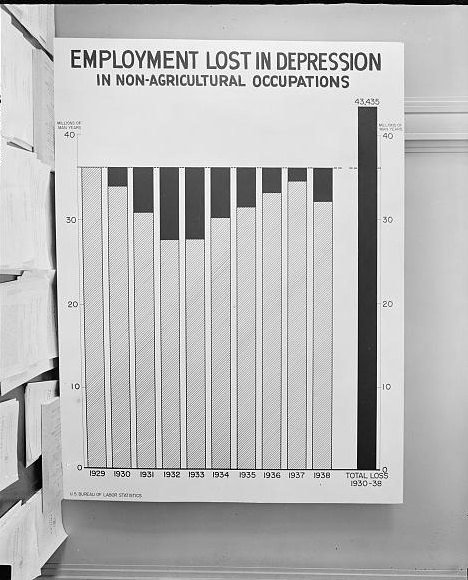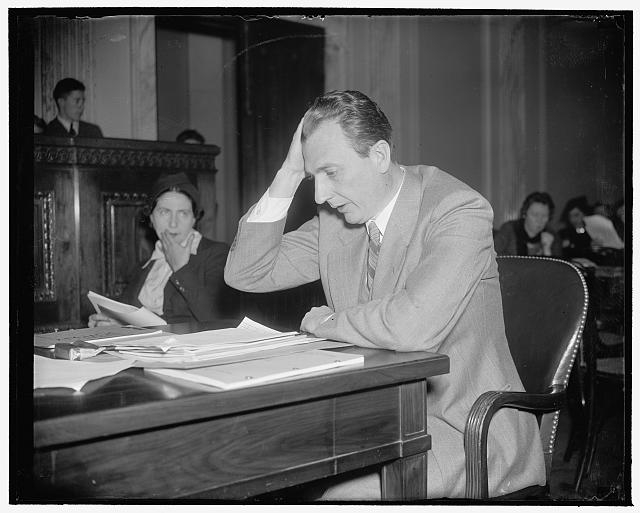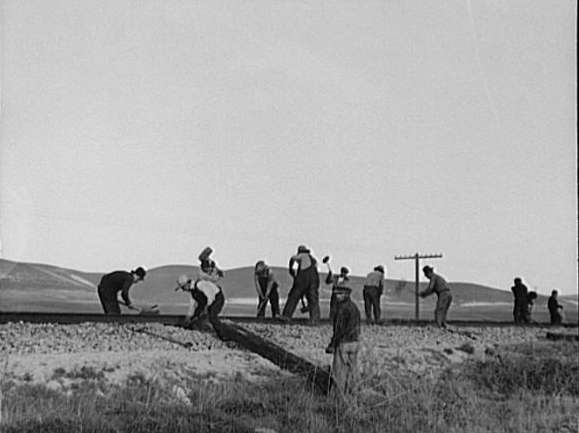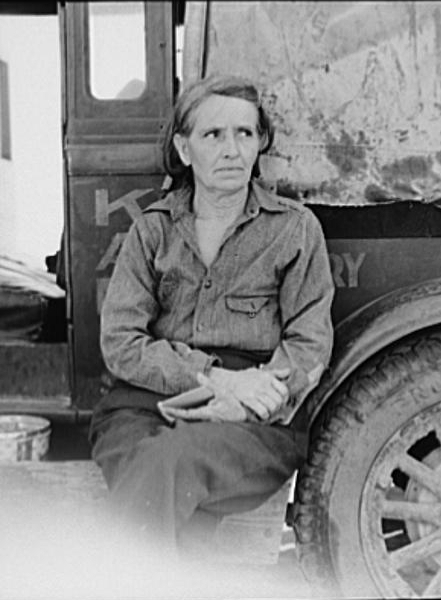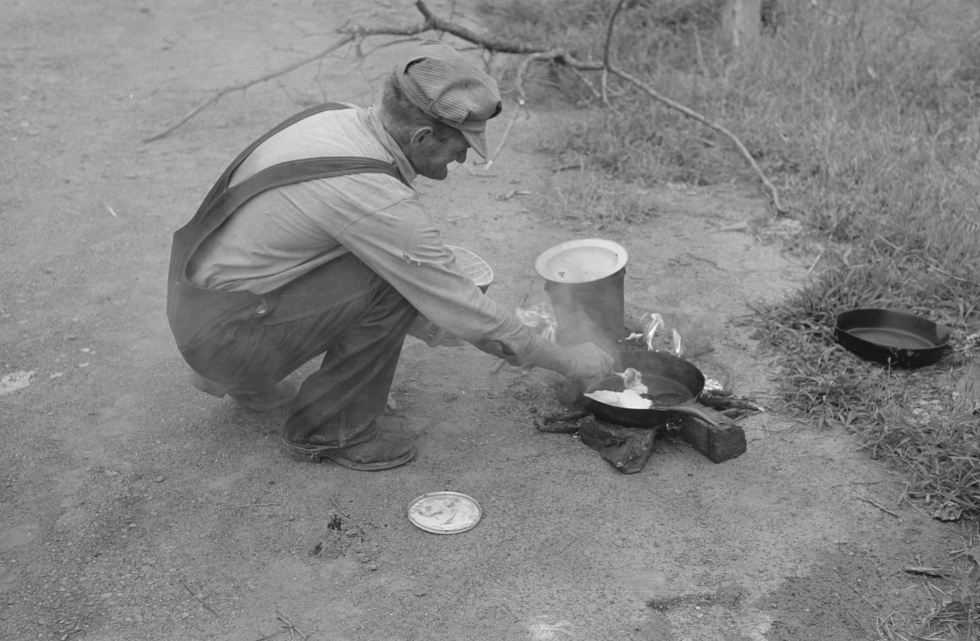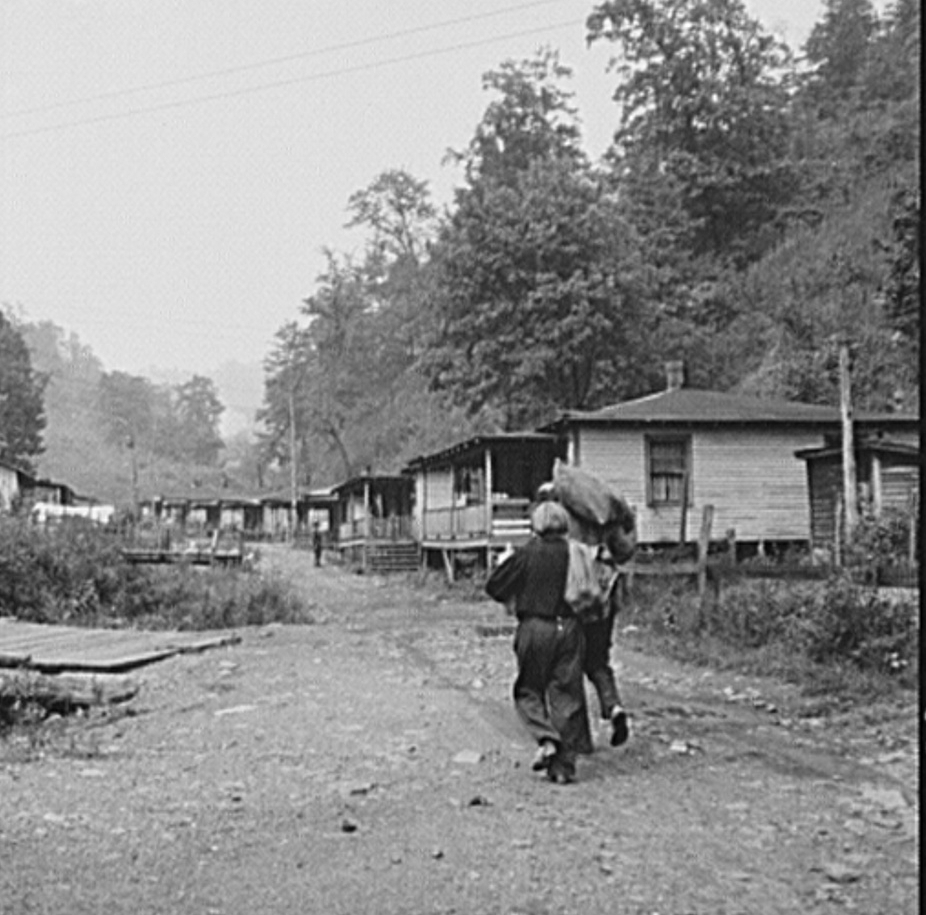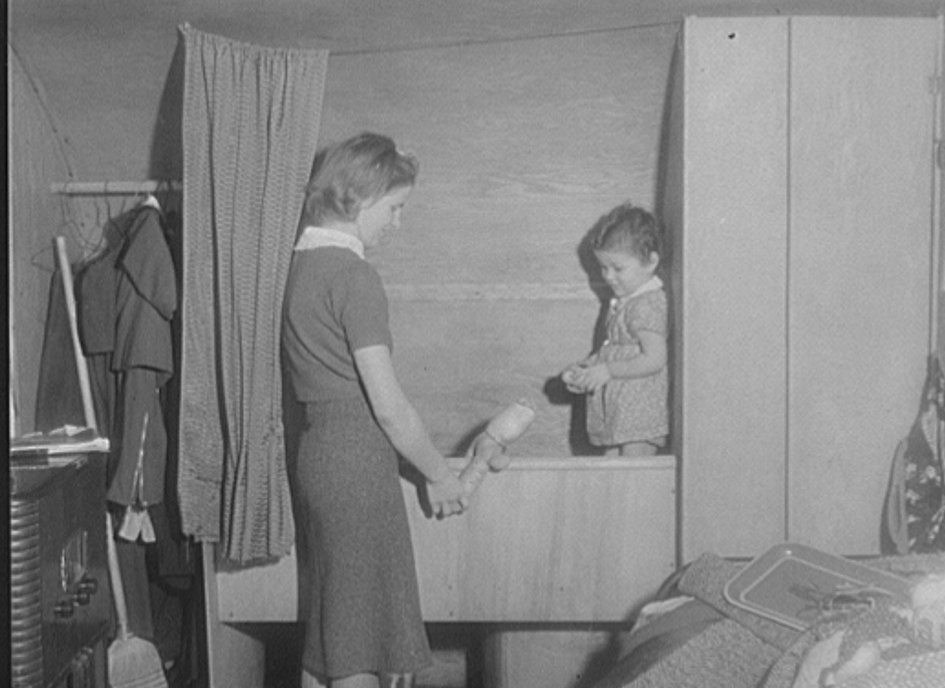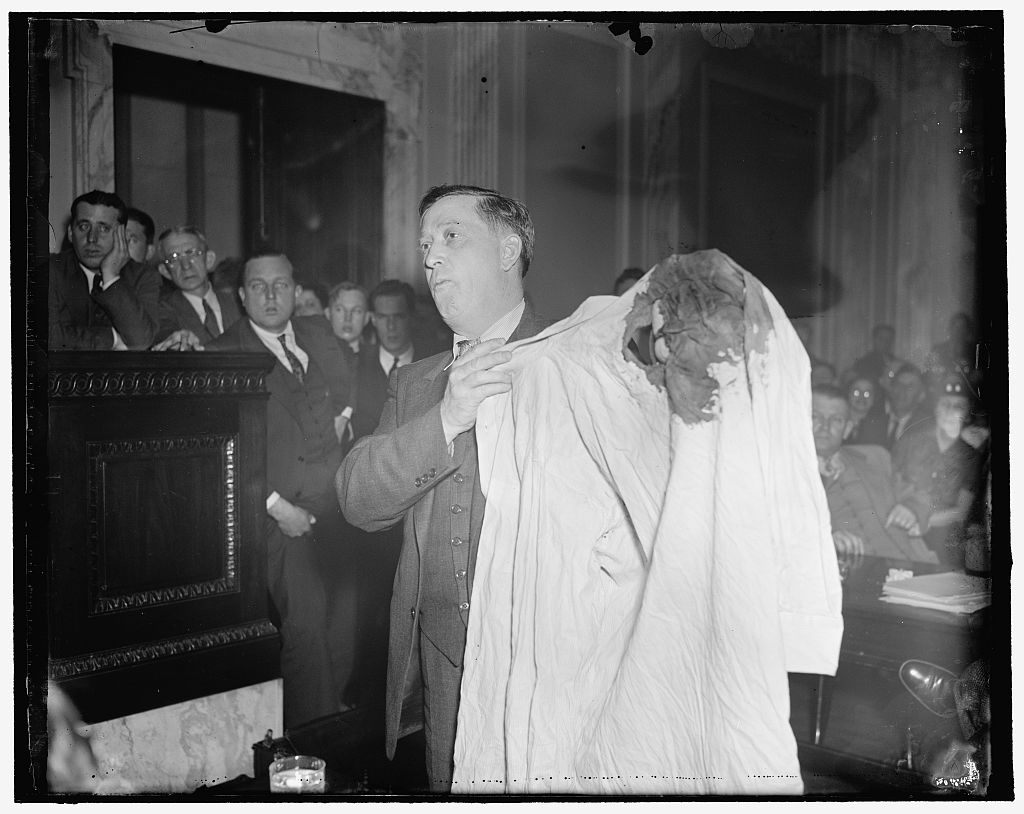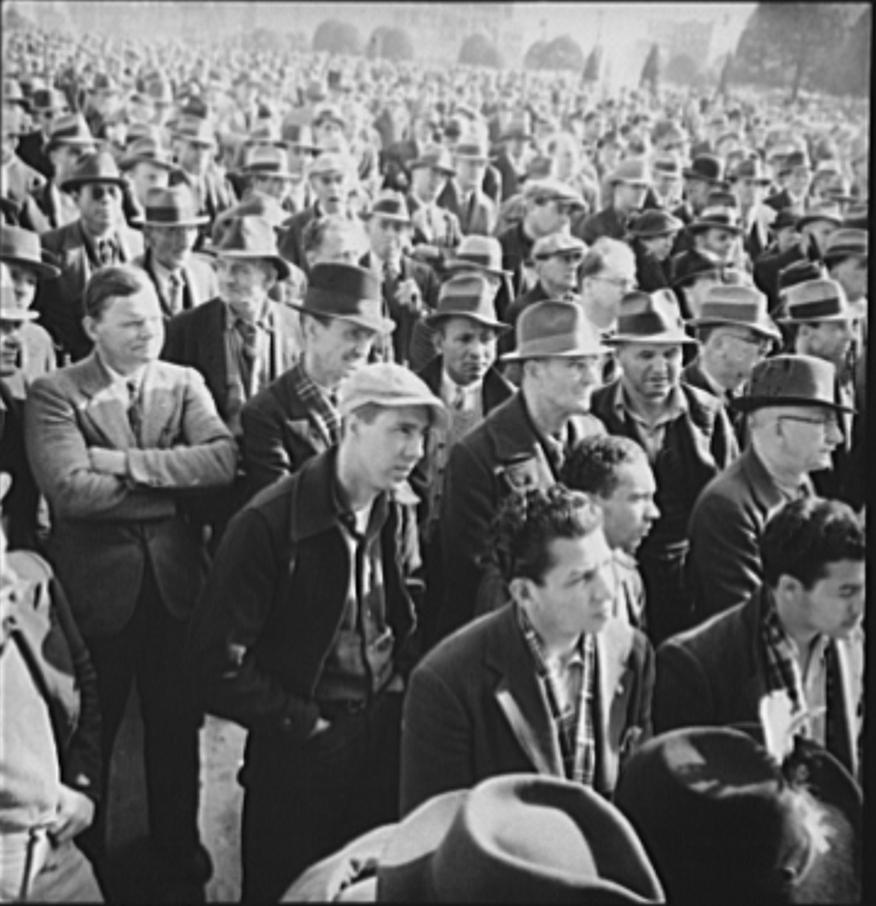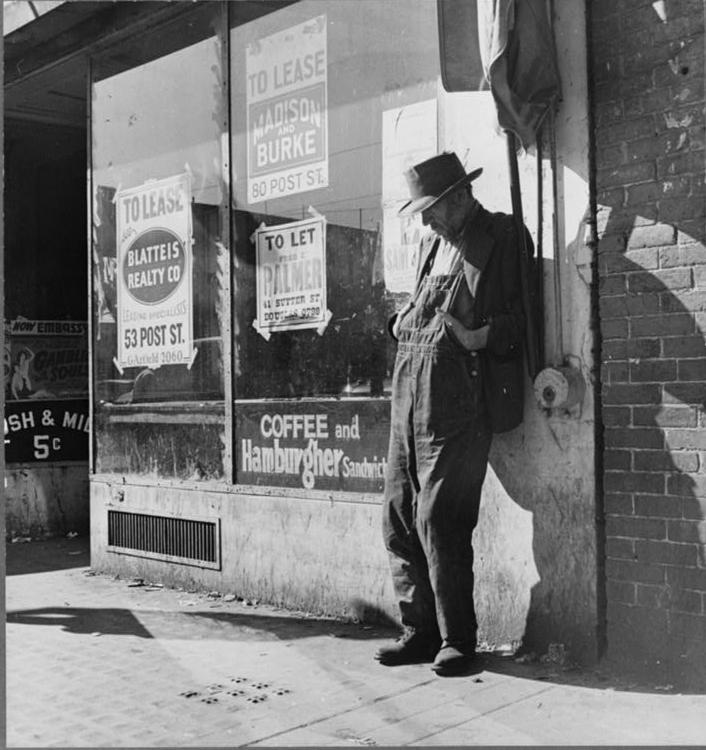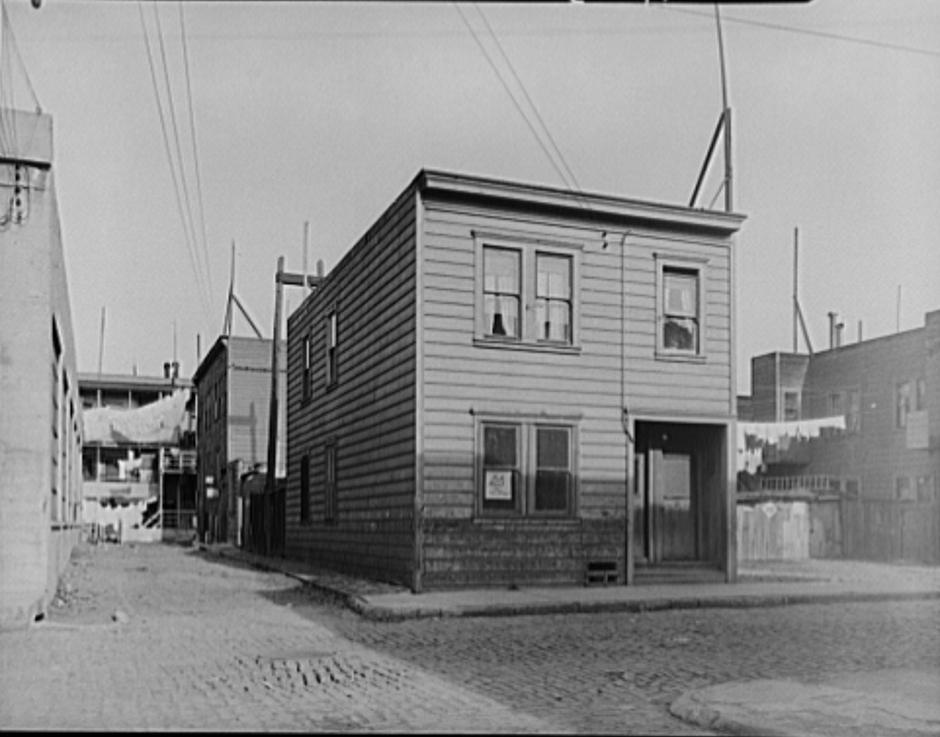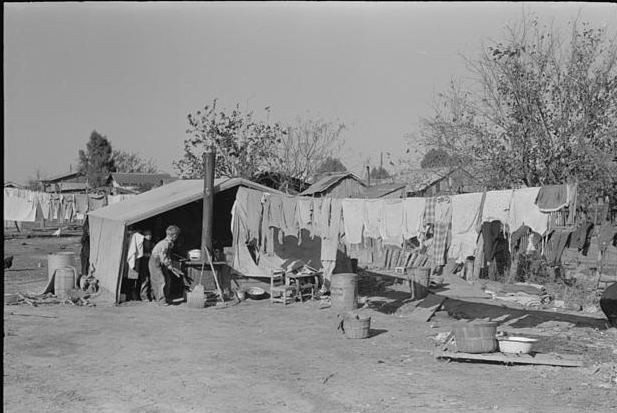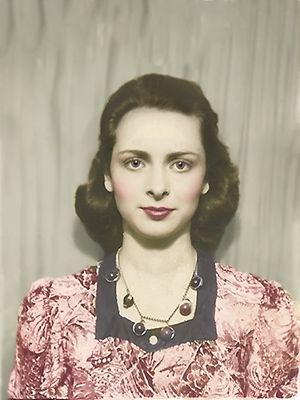
Oklahoma "ghost town"
 AncientFaces
AncientFaces Between both the Depression and the Dust Bowl, many small towns were decimated.
1937 Mississippi
 AncientFaces
AncientFaces Sharecroppers had to become cotton workers.
1935 Arkansas
 Kathy Pinna
Kathy Pinna No longer sharecroppers, they had to become day workers - cotton pickers on a plantation. This photo was taken at 6:30 in the morning.
1938 chart of lost jobs
 AncientFaces
AncientFaces In non-agricultural occupations, from 1929 - 1938. Millions of jobs were lost. The total US population at the time was around 129 million.
WPA Administrator, 1938
 AncientFaces
AncientFaces Testifying about the millions of people who need help. Doesn't he look distressed? It must have been a very difficult job with so many out of work.
California, 1937
 AncientFaces
AncientFaces The caption says that Mexicans used to do this work but during the Depression, the jobs went to "white workers".
Working in the pea fields, 1937
 AncientFaces
AncientFaces This woman wasn't young and it was hard work! Or maybe the work made her look older?
1939 "roadside camp"
 Kathy Pinna
Kathy Pinna Tending the fire and putting lard in a frying pan. Life of many people who lived on the road or in migrant camps during the Depression.
1938 miner's shacks
 Kathy Pinna
Kathy Pinna Coal mine workers' homes during the Depression.
1940 trailer
 Kathy Pinna
Kathy Pinna No running water so they got running water for their trailer from a nearby house.
1937: Kentucky coal miners
 Kathy Pinna
Kathy Pinna Workers were protesting and being shot by Harland County deputy sheriffs. This is the bloody shirt of one of the miners who was shot.
Congress cutting WPA funds
 Kathy Pinna
Kathy Pinna 1939 SF - workers at a protest to the cutting of WPA funds. The WPA had been established by the Federal government to provide jobs.
Howard St, San Francisco, 1937
 Kathy Pinna
Kathy Pinna This was "Skid Row."
3 rooms, $15
 Kathy Pinna
Kathy Pinna 1938 San Francisco - it would probably be $3500 today! (Mission District)
Weslaco, Texas 1939
 AncientFaces
AncientFaces Home of a day laborer during the Depression in Texas
Have photos that you'd like to see included? Share your photos or click "next page" below to see more photos from the Dust Bowl.

